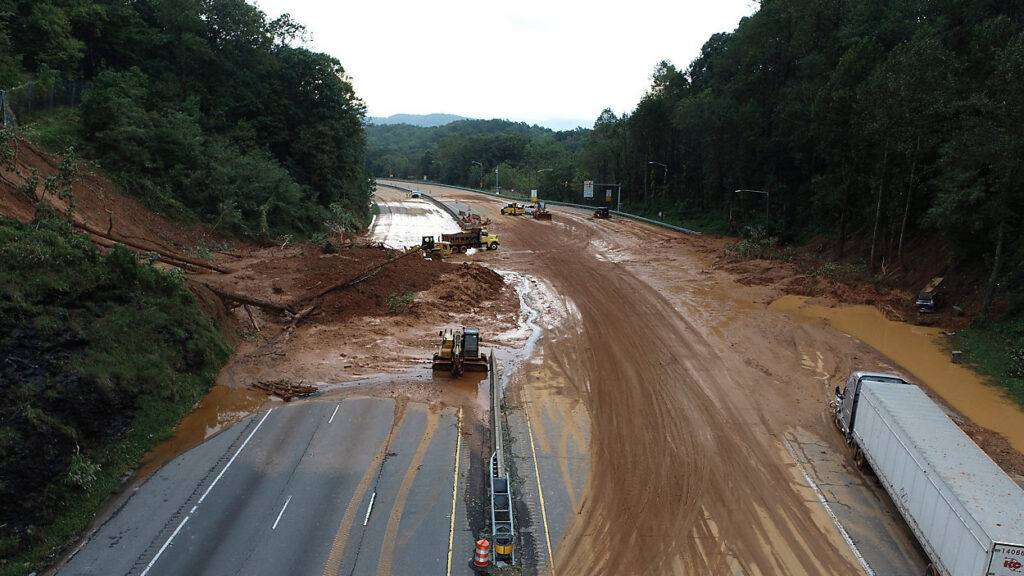
Interstate 40 (I-40) is one of the most crucial transportation corridors in the United States, spanning over 2,500 miles from California to North Carolina. The portion of I-40 running through North Carolina is especially vital, connecting major cities, facilitating commerce, and enabling smooth transportation across the state. In recent news, I-40 in North Carolina has been at the center of several important developments, from construction updates to traffic incidents and future projects that are set to improve travel along this key route.
This article will explore the latest news about I-40 in North Carolina, including ongoing construction projects, safety updates, and how these developments are impacting commuters, businesses, and travelers across the region.
Ongoing Construction on Interstate 40 in North Carolina
I-40 Expansion Projects
One of the most significant pieces of news concerning I-40 is the ongoing expansion and improvement projects aimed at enhancing traffic flow and reducing congestion. With increasing population growth and rising traffic volumes, certain areas along I-40 in North Carolina have become heavily congested, particularly during rush hours.
The North Carolina Department of Transportation (NCDOT) has been working on multiple projects along I-40, with some of the major ones focusing on widening key segments of the highway. These expansions will allow for additional lanes, thereby improving traffic conditions, reducing delays, and making the interstate safer for drivers.
One of the most notable projects includes the widening of I-40 between Wade Avenue and I-440 in Raleigh. This multi-million-dollar project, which started in [Year], is expected to be completed by [Projected Completion Date], and will add new lanes in both directions to ease the daily congestion experienced by commuters in the area.
Interchange Improvements
In addition to expanding the interstate itself, significant work is being done to improve key interchanges along I-40. Several outdated interchanges are being restructured to improve traffic flow, reduce bottlenecks, and increase safety. One example is the [Interchange Name] project, where a new flyover bridge and on-ramp configurations are being constructed to alleviate congestion and improve traffic safety.
Recent Traffic Incidents on I-40 in North Carolina
Accidents and Traffic Disruptions
Unfortunately, with the heavy volume of traffic that I-40 sees daily, accidents are a common occurrence. In the last few weeks, there have been several high-profile incidents along the interstate, causing significant disruptions for travelers.
Most recently, a multi-vehicle collision near [Location] resulted in the temporary closure of a portion of I-40, leading to traffic being rerouted for several hours. The accident, which involved multiple cars and a semi-truck, caused significant delays and required emergency response teams to attend to injured drivers and passengers. Fortunately, no fatalities were reported, though several individuals were taken to nearby hospitals for treatment.
This incident highlights ongoing safety concerns along I-40, especially in areas prone to heavy congestion or poor visibility during adverse weather conditions. Authorities have urged drivers to exercise caution when traveling on I-40, especially in construction zones and during peak travel times.
Environmental and Safety Concerns Along I-40
Wildlife Crossings
One of the unique challenges facing I-40 in North Carolina is its proximity to natural habitats, particularly in the western part of the state. In areas near the Great Smoky Mountains, wildlife crossings have become a pressing issue, with animals frequently wandering onto the highway, causing accidents and endangering both drivers and wildlife.
To mitigate this problem, NCDOT has been working on creating wildlife overpasses and underpasses in areas where animals are known to cross. These structures allow wildlife to safely cross the interstate without coming into contact with vehicles, thus reducing accidents and helping to preserve local ecosystems.
Climate Resilience
As the state grapples with the impact of climate change, the sustainability and resilience of I-40 have come into focus. The highway, especially in low-lying areas, is susceptible to flooding during major storms and hurricanes. Recent efforts have been made to elevate certain sections of I-40 and improve drainage systems to prevent future flooding events.
These updates are part of a broader initiative by the state government to improve the resilience of North Carolina’s infrastructure, ensuring that major transportation routes like I-40 remain functional even in the face of extreme weather.
Economic Impact of I-40 in North Carolina
Facilitating Commerce
I-40 is not only a vital transportation route for commuters and travelers but also a key artery for commerce in North Carolina. The interstate connects several major cities, including Wilmington, Raleigh, Greensboro, and Asheville, facilitating the transport of goods across the state and beyond.
Businesses that rely on transportation, particularly those in the shipping and logistics industries, benefit significantly from I-40’s direct connections to ports, railways, and other highways. The ongoing infrastructure improvements along I-40 will likely enhance the speed and efficiency of transportation, positively impacting North Carolina’s economy.
Tourism Along I-40
North Carolina’s diverse geography and rich culture make it a popular destination for tourists, many of whom travel along I-40 to visit some of the state’s top attractions. From the Appalachian Mountains in the west to the Outer Banks in the east, I-40 offers convenient access to a variety of scenic destinations.
Recent efforts to improve rest areas and signage along I-40 aim to enhance the experience for tourists, ensuring they have safe and comfortable places to stop along the way.
Future Developments on I-40 in North Carolina
Smart Highway Technologies
As part of North Carolina’s broader transportation strategy, there are plans to implement smart highway technologies along I-40 in the near future. These technologies include real-time traffic monitoring, intelligent transportation systems (ITS), and dynamic toll lanes that will allow drivers to use high-occupancy lanes for a fee during peak travel times.
The integration of smart technology is expected to improve traffic flow, reduce congestion, and enhance overall safety on the interstate. Additionally, these systems will provide real-time updates to drivers via digital signage and mobile apps, making travel along I-40 more efficient.
Public-Private Partnerships
To fund these extensive infrastructure projects, North Carolina has been exploring public-private partnerships (PPPs). These partnerships allow private companies to invest in transportation projects in exchange for future revenue from tolls or other sources. This model has been successfully implemented in other states and could be a viable option for improving and maintaining I-40 over the long term.
Impact on Commuters and Local Communities
Daily Commutes
For thousands of North Carolina residents, I-40 is an essential part of their daily commute. The ongoing construction projects, while necessary for long-term improvements, have caused temporary disruptions for commuters. Lane closures, detours, and reduced speed limits in construction zones are common, and drivers are advised to plan their routes accordingly.
However, once these projects are completed, commuters can expect a smoother, faster, and safer driving experience. The addition of new lanes and improved interchanges will reduce bottlenecks and make commuting along I-40 less stressful.
Community Engagement
NCDOT has made efforts to engage with local communities affected by the ongoing construction. Public meetings, online forums, and surveys have allowed residents to voice their concerns and provide feedback on the projects. This engagement ensures that the needs of local communities are considered in the planning and execution of I-40 improvements.
Conclusion
Interstate 40 in North Carolina remains a critical transportation route, and the recent developments along this highway are set to improve its functionality and safety for years to come. From ongoing construction projects aimed at reducing congestion to efforts to address environmental concerns, I-40 is undergoing significant transformations.
As we look toward the future, the integration of smart highway technologies and public-private partnerships will play a crucial role in maintaining and enhancing I-40. For travelers, commuters, and businesses alike, these updates will ensure that I-40 continues to be a reliable and efficient route across North Carolina.
For more updates on transportation projects and other breaking news in North Carolina, visit Newsify.









Leave a Reply